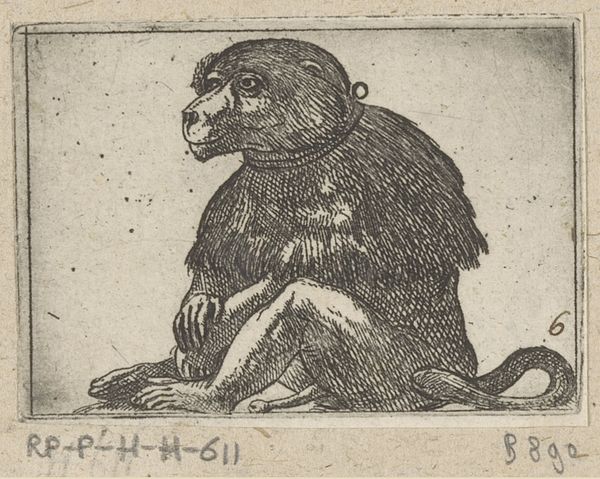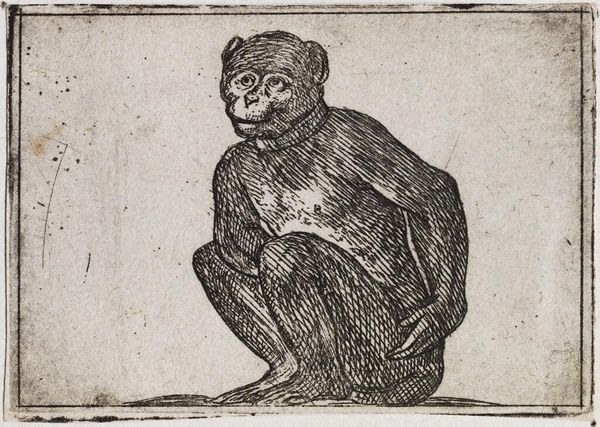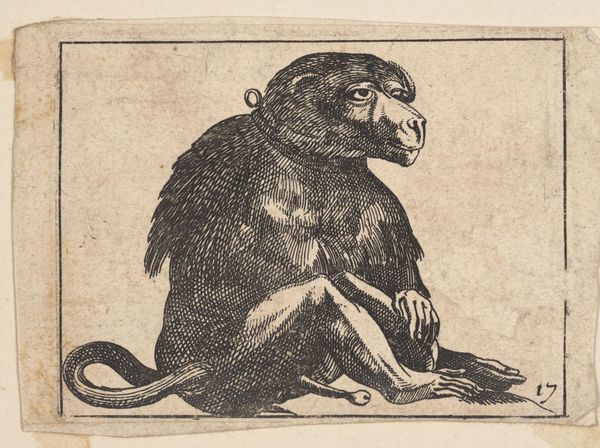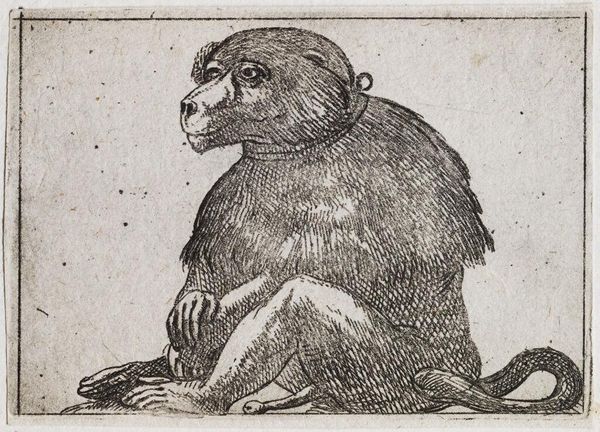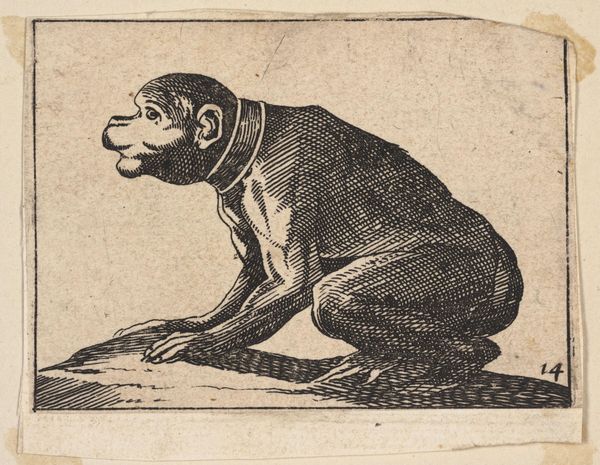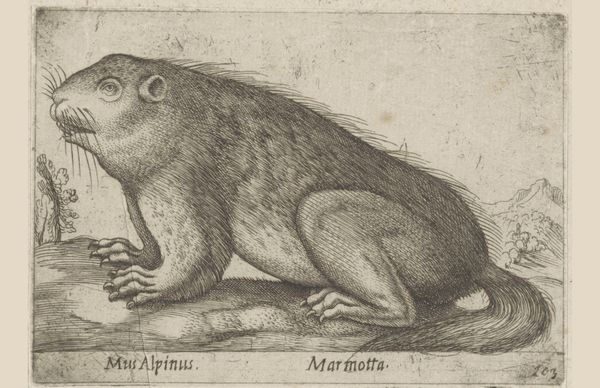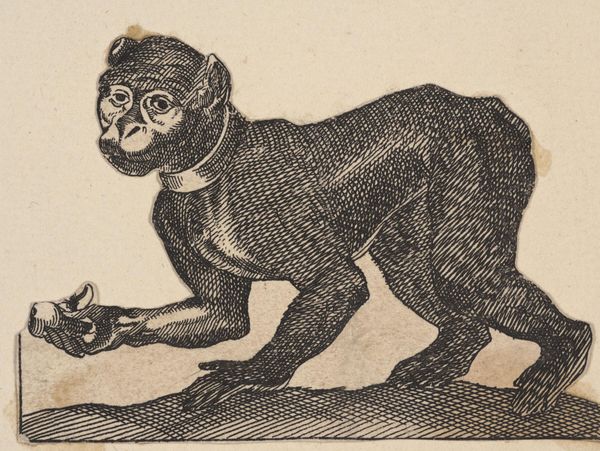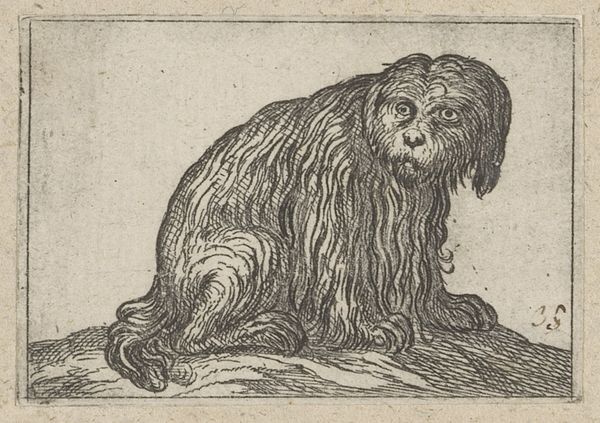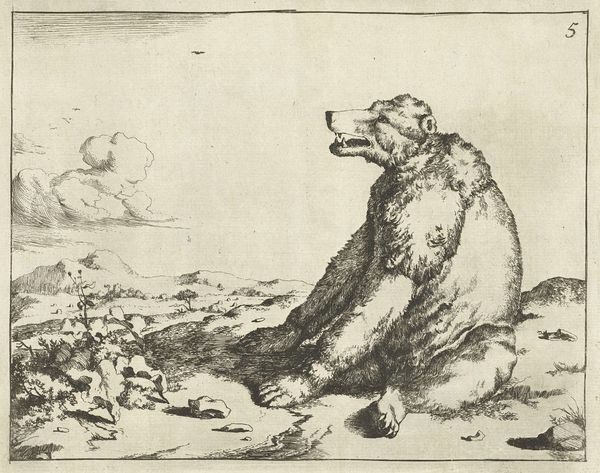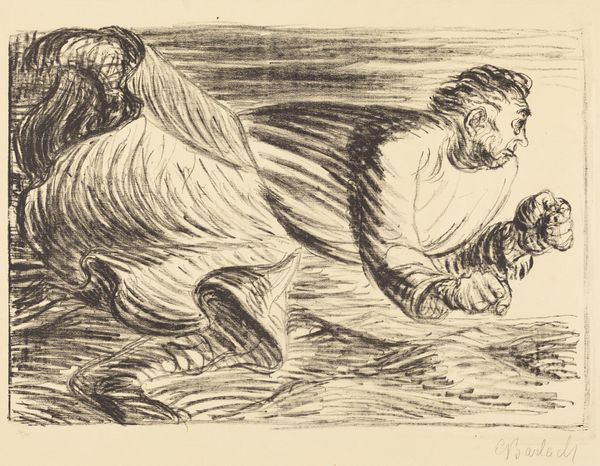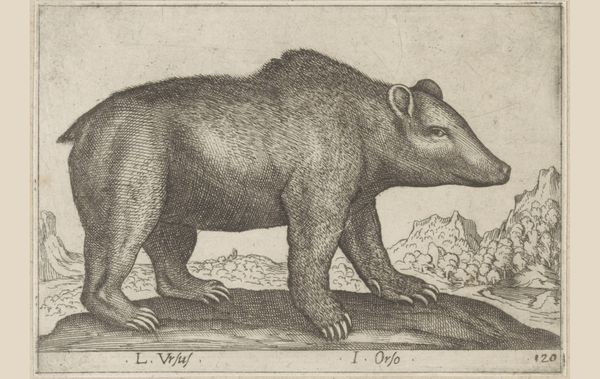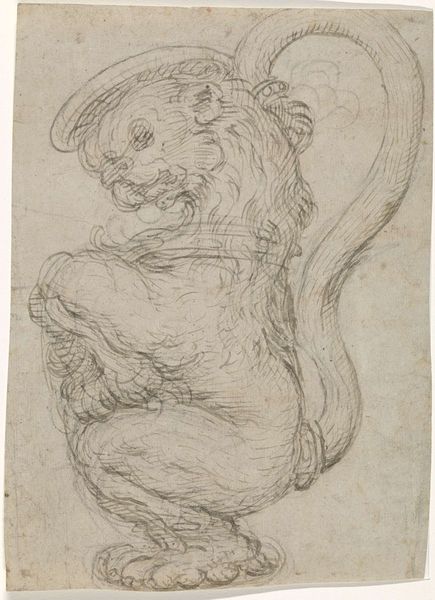
drawing, print, engraving
#
portrait
#
pencil drawn
#
drawing
#
aged paper
#
toned paper
#
light pencil work
#
animal
# print
#
pencil sketch
#
old engraving style
#
sketch book
#
mannerism
#
figuration
#
personal sketchbook
#
sketchbook drawing
#
sketchbook art
#
engraving
Dimensions: height 43 mm, width 67 mm
Copyright: Rijks Museum: Open Domain
Curator: Here we have “Zittende aap,” or “Sitting Monkey,” an engraving likely dating from between 1565 and 1630 and currently residing here at the Rijksmuseum. Editor: There's something immediately poignant about it. The hatched lines create such intense shading, especially around the face. It conveys a somber mood despite the relative simplicity of the image. Curator: Indeed. Monkeys have long served as complex symbols in art. During this period, one sees them employed as allegories of base human instincts, such as foolishness and vanity. But they can also symbolize skilled imitation. Editor: The quality of line is quite remarkable; notice how each contour describes volume, yet the lines remain relatively uniform in weight and spacing. The crosshatching isn’t overly fussy, keeping the composition very legible despite its detail. Curator: This monkey's posture evokes a sense of introspective stillness. Is he aping human behavior, a silent observer, or trapped, as the collar seems to suggest? Representations of apes in art mirror humanity's evolving self-awareness, confronting our own animalistic nature. Editor: The texture of the aged paper, as well as the visible plate marks, is such an integral part of this artwork. It serves not only as a substrate for the image, but contributes directly to its aesthetic and atmospheric impact, enhancing its presence through visible age and wear. Curator: Absolutely. In this small engraving, the artist captures not just the likeness of an animal, but the weight of centuries of cultural projection and meaning onto primates. Editor: For me, this study highlights how a humble animal portrait, with rigorous attention to formal qualities, can speak volumes about texture, line and, ultimately, the passage of time.
Comments
No comments
Be the first to comment and join the conversation on the ultimate creative platform.
